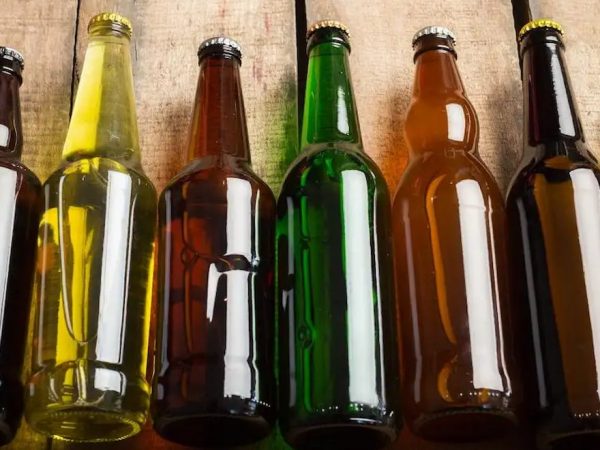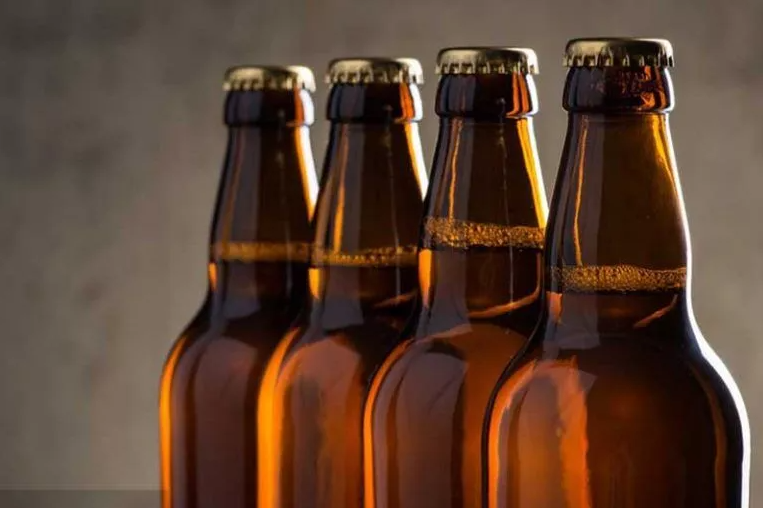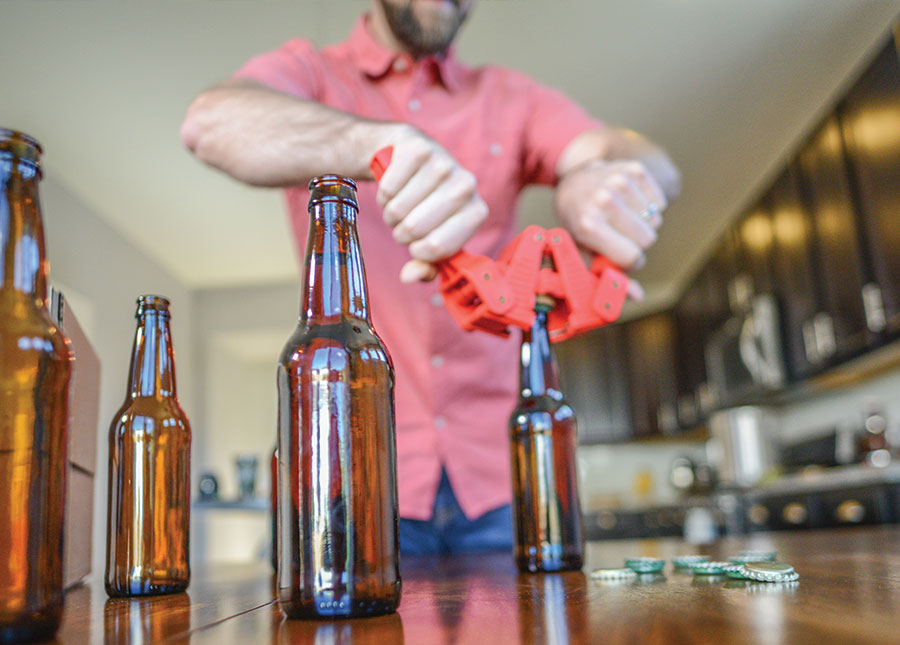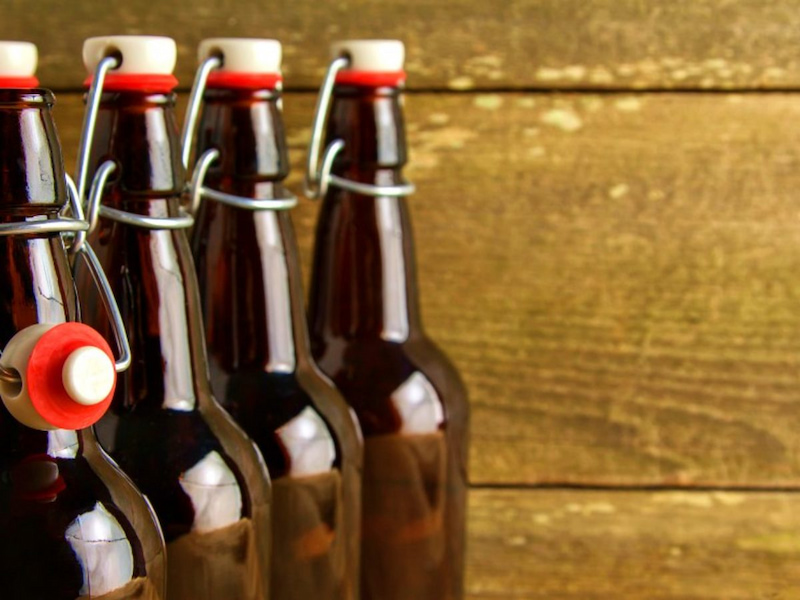12
Jul

You’ve decided to brew your beer at home and bought your first homebrewing kit. For a beer lover, there are a few things better in this world than a bottle of cold homemade beer. And now, you can also gift your beer, alone or as a part of a carefully curated gift basket. So, what’s next? Once you start crafting your own beer, you must get ready to store and age your staggering brew. How do you do that?
Great beer deserves quality bottles, meaning you want the best bottles for your craft beer. Here’s everything you need to know about bottling and the different types of beer bottles.

The beer bottling process is as vital as fermentation or mashing; if you don’t do it properly, it can undoubtedly ruin your batch of beer. Therefore, the bottle choice is crucial – it can make or break your brew’s quality.
While the type and size of the beer bottles you choose come to personal preference, other factors like lighting and oxygen levels should come before choosing the bottle style. Here’s why.
Have you ever wondered why they use dark-tinted glass bottles for store-bought beer? It has a lot to do with beer carbonation and preservation.
Whether you’ve just got into homebrewing or been brewing for a while now, you must know about carbonating. In short, once you bottle your beer, it takes 2-3 weeks for the CO₂ to integrate into your beer. We call this process carbonation. It gives the beer the creamy taste and foamy texture you love, creating those delightful fizzy bubbles giving a tingling sensation when you drink a beer. How are bottles connected to this process?
As you may already know, before you bottle your finished beer, you should prime the bottles first. You do that by adding a small amount of sugar, and the remaining yeast will produce CO₂, consuming the sugar. The CO₂ stays trapped in the bottle and carbonates the beer. For this, you need to provide a dark environment and cap your bottles tightly.
If the place where you’ll store your beer isn’t completely dark, it’ll be best to choose brewing bottles with dark-coloured amber glass. Such bottles help keep light and warmth out of the bottle.
The same goes for the type of capping a bottle has. Bottles with flip tops are a top choice as you can reuse them many times. However, you must be careful when using them since they might not close properly. Your best bet is to use a cap tightener and cap specific to beer bottles.

There are several types of beer-compatible bottles, coming in different sizes and shapes. You should consider both factors when you choose a bottle for your brew. Some like smaller bottles to finish their beer in a few sips. Others drink more and prefer larger bottles. And there’s a group of people to whom aesthetics is a top priority. Think about your preferences, and you won’t miss choosing the right beer bottle for you. If not sure, you can try out a couple of different bottle shapes to see which one works best for you.
Many new beer makers want to start with standard PET bottles. Plastic bottles are durable, affordable and reusable. They’re a great choice as you become acquainted with beer bottling.
Their downside is obvious: it can be harder to protect your beer completely from oxygen, so there’s a chance of oxidation that can harm your beer carbonation. As many new brewers are impatient to try their craft beer, this shouldn’t be a problem.
If you’re making beer with a longer carbonation time than 2-3 weeks and prefer plastic bottles, try using PET bottles with an oxygen barrier. They’re sturdier than standard PET bottles and have thicker walls to prevent carbon and oxygen loss. They’re a good choice if you plan to transport or ship your beer, as they won’t break in transit.
Glass bottles come in a variety of shapes. One option is the long neck, the standard bottle in America, usually available in 12 oz or 350 ml size.
The British bottle is iconic, and you can often see it in older British films. It’s available in 330 and 500 ml sizes, large and thick from top to bottom, with a little thinner neck.
The Belgian bottle isn’t only for Belgian beers; it simply says it comes from Belgium. It looks similar to the long neck but has a curvier connection between the body and neck.
And there also is the stubby – a bottle with a wider body and a shorter neck. All these bottles require a capper device and crown caps, meaning you’ll also need a bottle opener when consuming the beer.

These are bottles that have a self-locking tap to protect your beer. They look great on the shelf, and you can reuse them many times.
Growlers are 2-litre, or half-gallon, containers initially designed to transport beer from the brewery for home use. Although used since the 1800s, they’re becoming the favoured option for home beer crafters. Beer growlers are an effective yet affordable alternative to conventional beer bottling.
There are several ways to fill your growler with your homebrew. The most traditional one includes attaching an extension tube to the beer barrel faucet. This method allows to fill the growler from the bottom up, similar to bottling. Another option is a counter-pressure CO₂ filling. This way, you fill your growler while limiting the amount of oxygen in your beer. Another method, not very popular, is filling directly from the tap. Creating a mess and lots of foam when using this method is inevitable. It also helps the beer degrade much faster, so it’s the last option that beer crafters use.
The home brew bottles you choose are a personal decision. It’ll evolve as you become more experienced as a beer maker. Knowing the different types of bottles and the main bottling principles will help you make the right decision and start well.